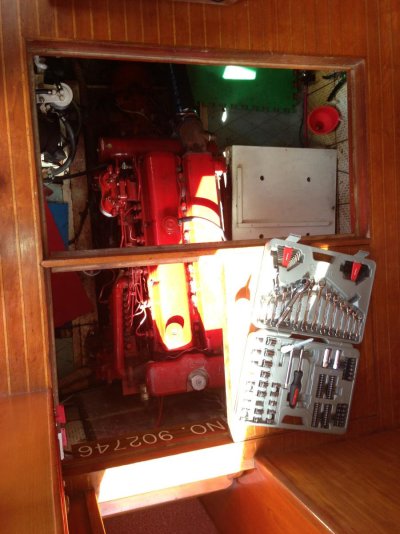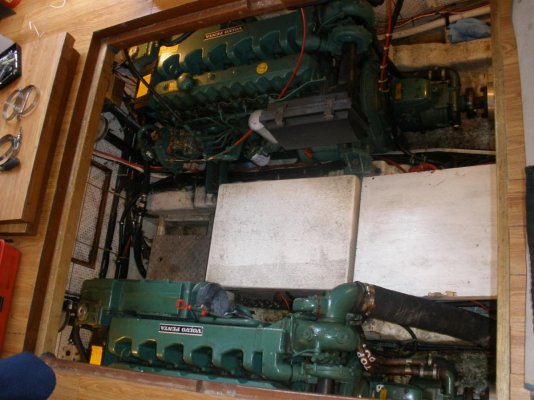#1 - I think I would try a detergent first. Then if an small area is stubborn try the solvent. Solvents and I've used them, leave fumes which can be dangerous to your breathing and explosive. If you do insist on going with solvents then the very least is a GOOD quality FUME mask and a blower or two to help clear the air. I've done that too using two or more bilge blowers rated for gasoline service. For oil then paint thinner, diesel fuel, are possibly the least noxious. They can still be dangerous in closed areas.
#2 - The pan depends entirely on access. You could make a tray out of fiberglass. It doesn't need to be very heavily built. Try making a pattern out of cardboard first to find the pitfalls and obstructions. Maybe if really lucky you could cut down a plastic storage bin for a decent fit.
As for cleaning I vacuum all loose stuff out that I can. Then I use the blue Scott paper towels from Walmart or auto parts stores and wipe all that I can of any oily or messy residue. They are cheap and strong. Househlod types are a waste of time. Then go at it with a good detergent with a long handled brush to reach under the engine and gear. Wipe it all up. If the marina has an oily waste disposal bin the rags and towels can go there usually. I used to do it the enviromentally unfriendly way but have wised up , sort of.
#3 - Wiring rats nest. Oh fun, although it can be. Get some Tyraps or Zapstraps , the BLACK ones, and some screw fastened Tyrap mounts and just start tieing wires up and securing them. While at it do repairs as required. Closely inspect what you have for condition. Yes some will want to rewire the boat but unless the wiring is literally falling apart that is not necessary. Some wiring may be found to need replacement immediately and that should be done but other wise clean up and secure it all so things don't get worse. Pay particular attention to the bilge pumps and their wiring as this is often crappy and the pumps don't work. Depending on how the wire runs are laid out it may be worthwhile to secure some light board across joists and then the wiring can be nicely secured to the board.
#4 - really no optimal for all boats. It all depends upon the loads you have, how much power you use and therefore how much battery capacity you need. Take your time here, get Nigel Calders book Boat Owners Mechanical and Electrical Manual and read it, really read it. Pay attention to the sections on batteries , loads and how to estimate requirements, drawdown limits AND recharging requirements. Deciding beforehand without reasonable knowledge may result in spending more than necessary or not putting in enough, suffering power shutdowns and then later trying to figure out how to get more batteries without destroying previous work. I have the equivalent of 6 x 6V golf carts of 220 A.H. or 660A.H. or 3 x 12V 660 A.H. and find it's Ok for 3 days in hot weather but I have a smaller boat with deliberately not a lot of electrical stuff aboard. That may be why your P.O. had so many batteries. Of course better understanding the system and its and your needs may lead you to fewer batteries, OR NOT.
#5 - Environmental nightmare? Specific concerns? A little more clarity about your meaning would help. Unfortunately all boats have the possibility of creating an enviro. nightmare if not looked after properly. Sound like you won't unless something stupidly unlucky happens while you sort through things.
#6 - most of those tiles seem to have disappeared although similar products may be available. There are seveal older threads about this:
Trawler Forum - Search Results
I found these simply by Searching ceiling tiles
Have fun and if??? when you have specific questions get back. We' will gladly help???????? if help it seems at times.












 I've also been known to vacuum while down there.
I've also been known to vacuum while down there.